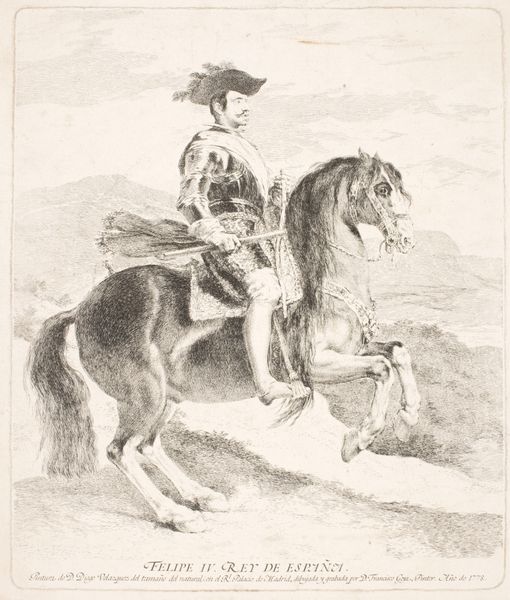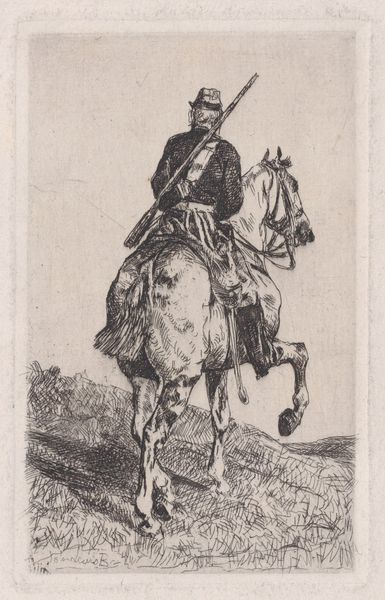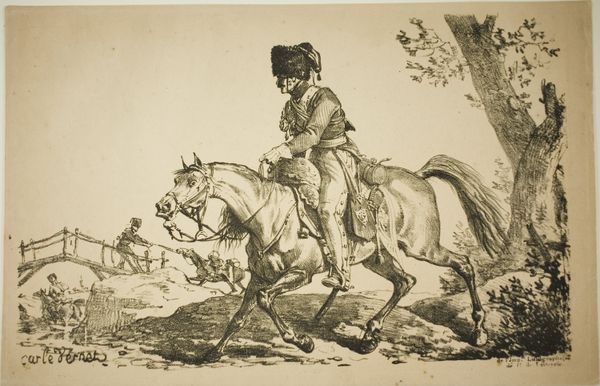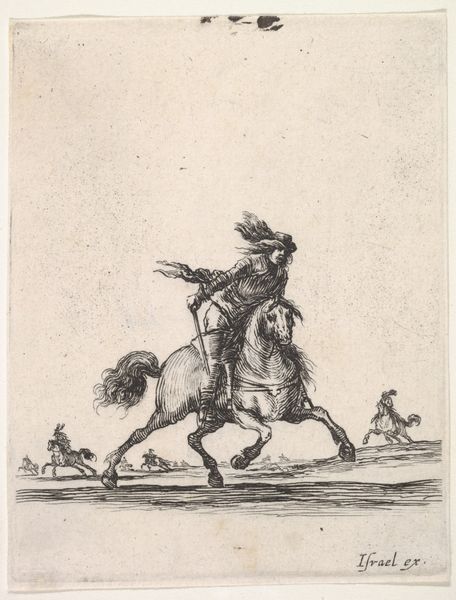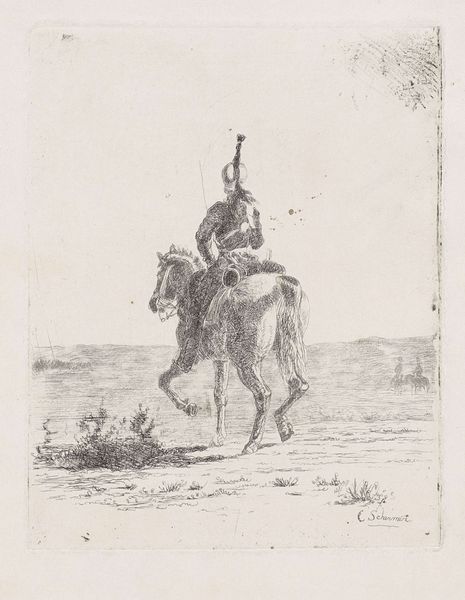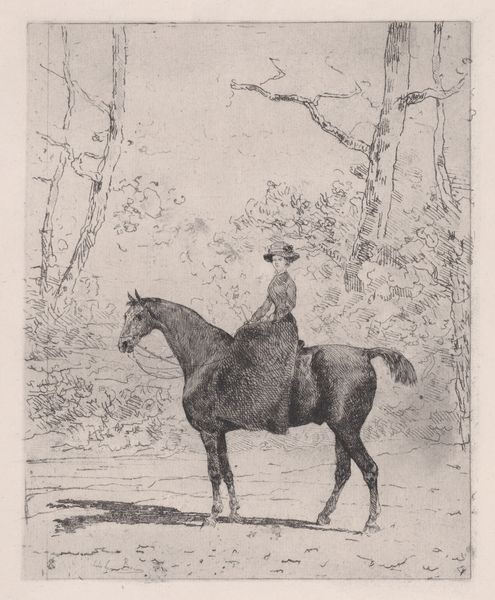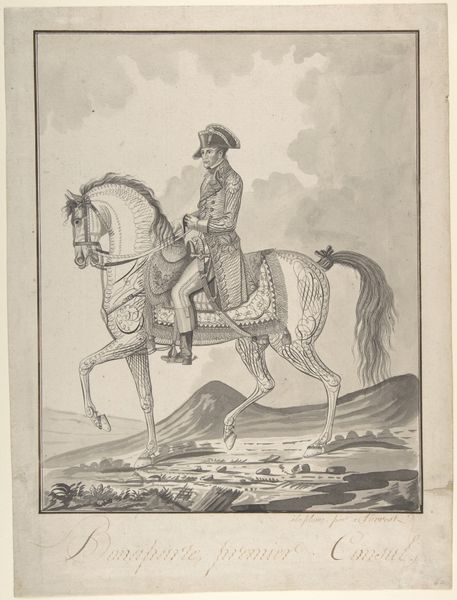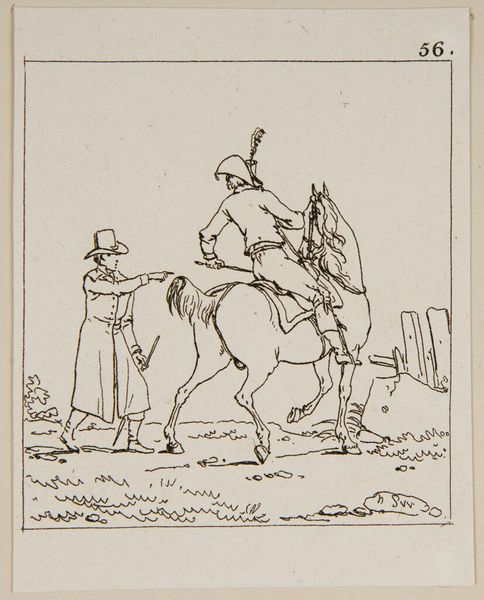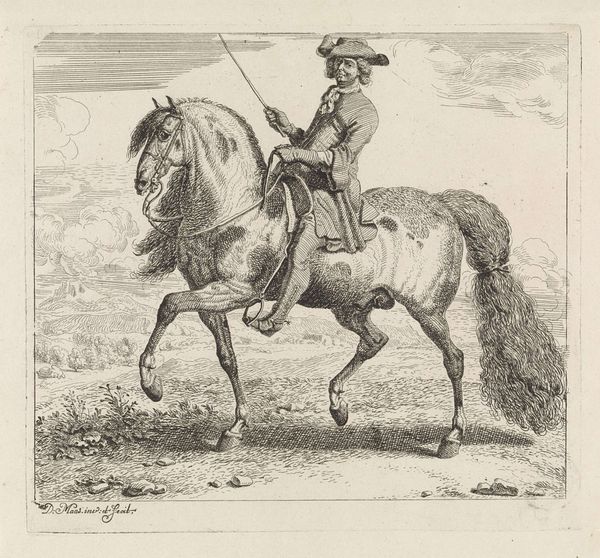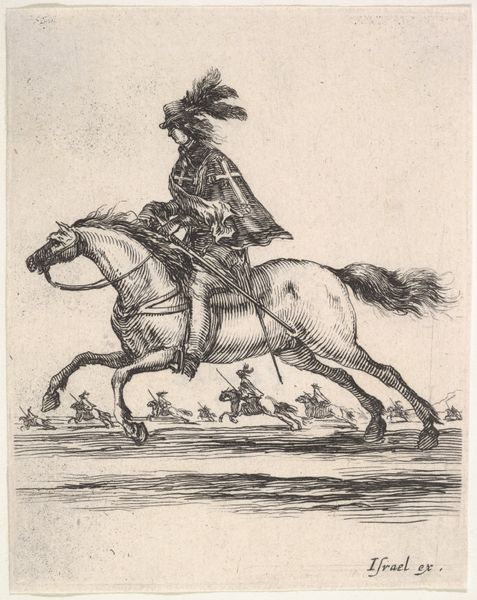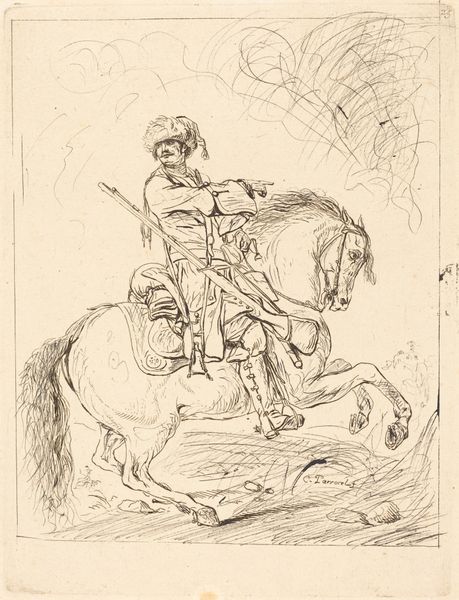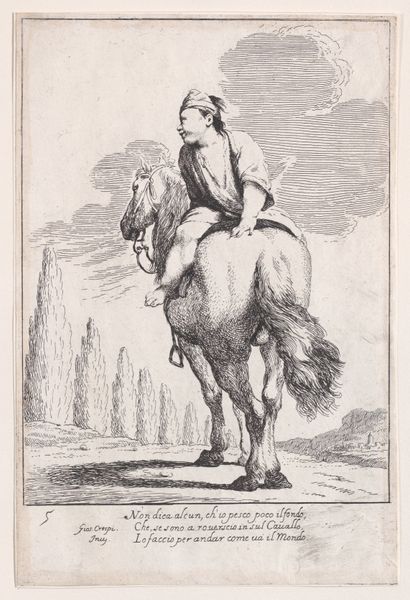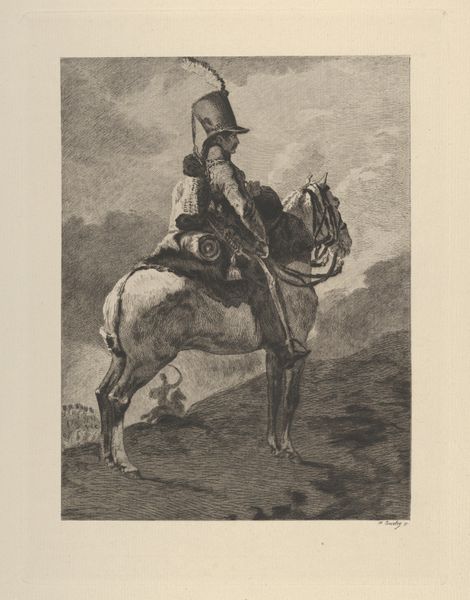
drawing, ink, pen
#
drawing
#
quirky sketch
#
pen sketch
#
landscape
#
figuration
#
personal sketchbook
#
ink
#
sketchwork
#
ink drawing experimentation
#
pen-ink sketch
#
pen work
#
sketchbook drawing
#
pen
#
sketchbook art
#
realism
#
initial sketch
Dimensions: height 63 mm, width 45 mm
Copyright: Rijks Museum: Open Domain
Curator: Here we have Isaac Weissenbruch’s “Man zittend op een balkende ezel,” dating from 1836 to 1912. It’s currently housed at the Rijksmuseum. The work is primarily ink and pen on paper. Editor: My first impression is one of spontaneity. It’s loose and playful, more like a quick study than a formal piece, really capturing the texture of the subject by varying line weights. Curator: Precisely. I see it as a reflection of burgeoning individualism. The artist foregrounds the everyday experience of working men and rural life rather than focusing on traditional subject matter for that period. How does labor interplay with the figures here, especially considering the era? Editor: The figure on the donkey, possibly a farmer or rural worker, merges into the animal; both their bodies almost indistinguishable as labour becomes integrated with this animal force, a form of proto-industrial symbiosis rendered in material form via simple ink on readily available paper. This cheap, common material shows that he’s elevating his role. Curator: In this period of modernization and class tensions, it can be read as celebrating working-class identity—placing value on manual labor and rejecting traditional notions of what constituted “art.” But this is not overt celebration. Look how slumped that figure on the donkey looks; what statements is this image making about the burden that this group faces? Editor: The simple materials belie an interesting process. The rapid hatching creates a sort of implied movement—a dynamic quality that adds tension. One sees labor reflected in his strokes, repetitive and almost meditative, perhaps drawing parallels to the kind of endurance this figure would encounter. The lack of refinement draws your eye towards its rawness. Curator: That's a great point. We also have to ask what a drawing like this might tell us about the identity of its maker. A personal sketchbook of the type would function differently in the period; how does the intimacy of its setting help us reflect on identity, gender and politics? Editor: So, for me, this piece uses a simple medium to show social complexities of early industrialized society and the physical materialization of labor, and how society sees certain groups. Curator: Yes, for me too, it showcases artistic choices regarding subject matter that help question broader assumptions around representation, labor and identity within its social frame.
Comments
No comments
Be the first to comment and join the conversation on the ultimate creative platform.
